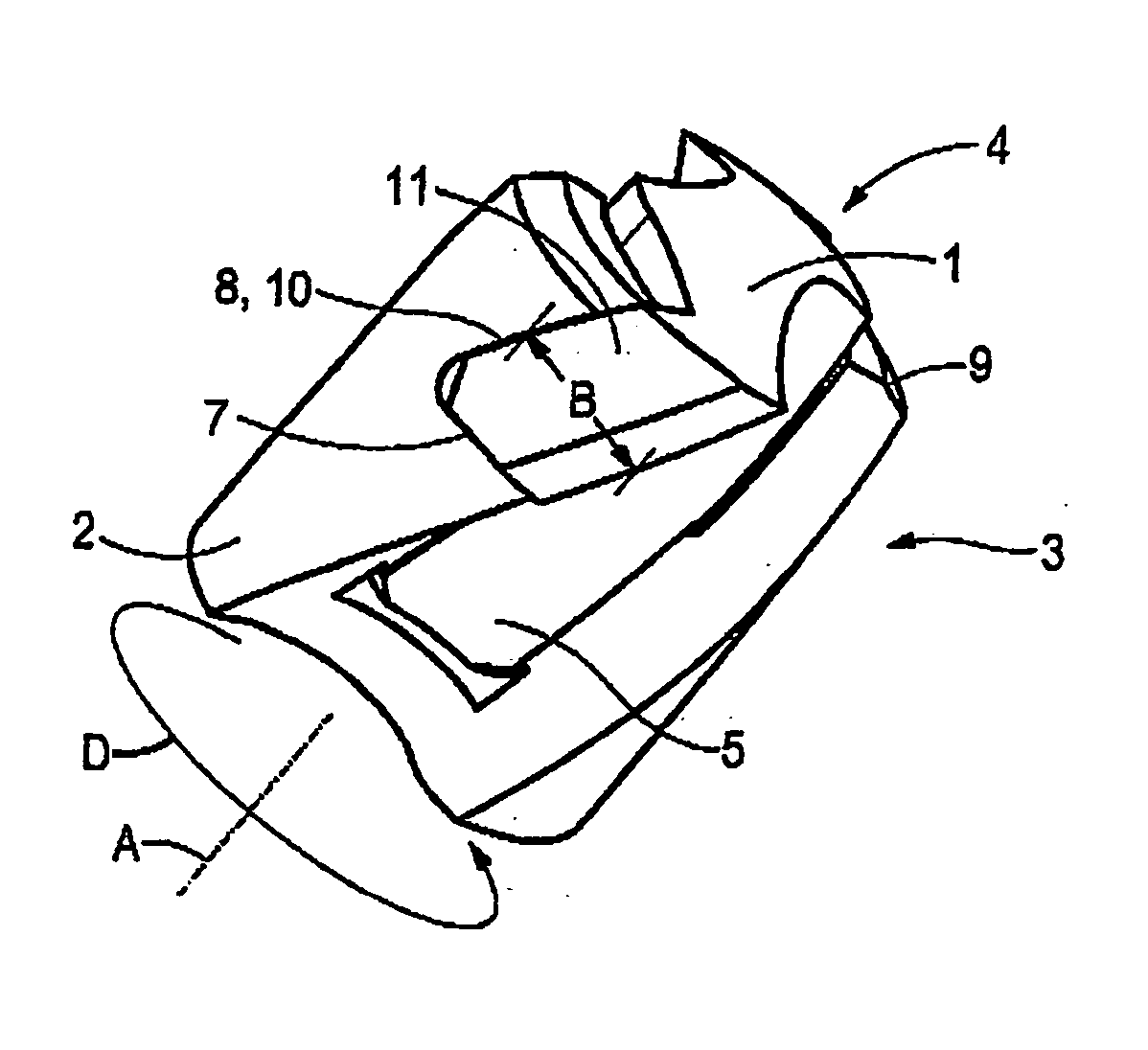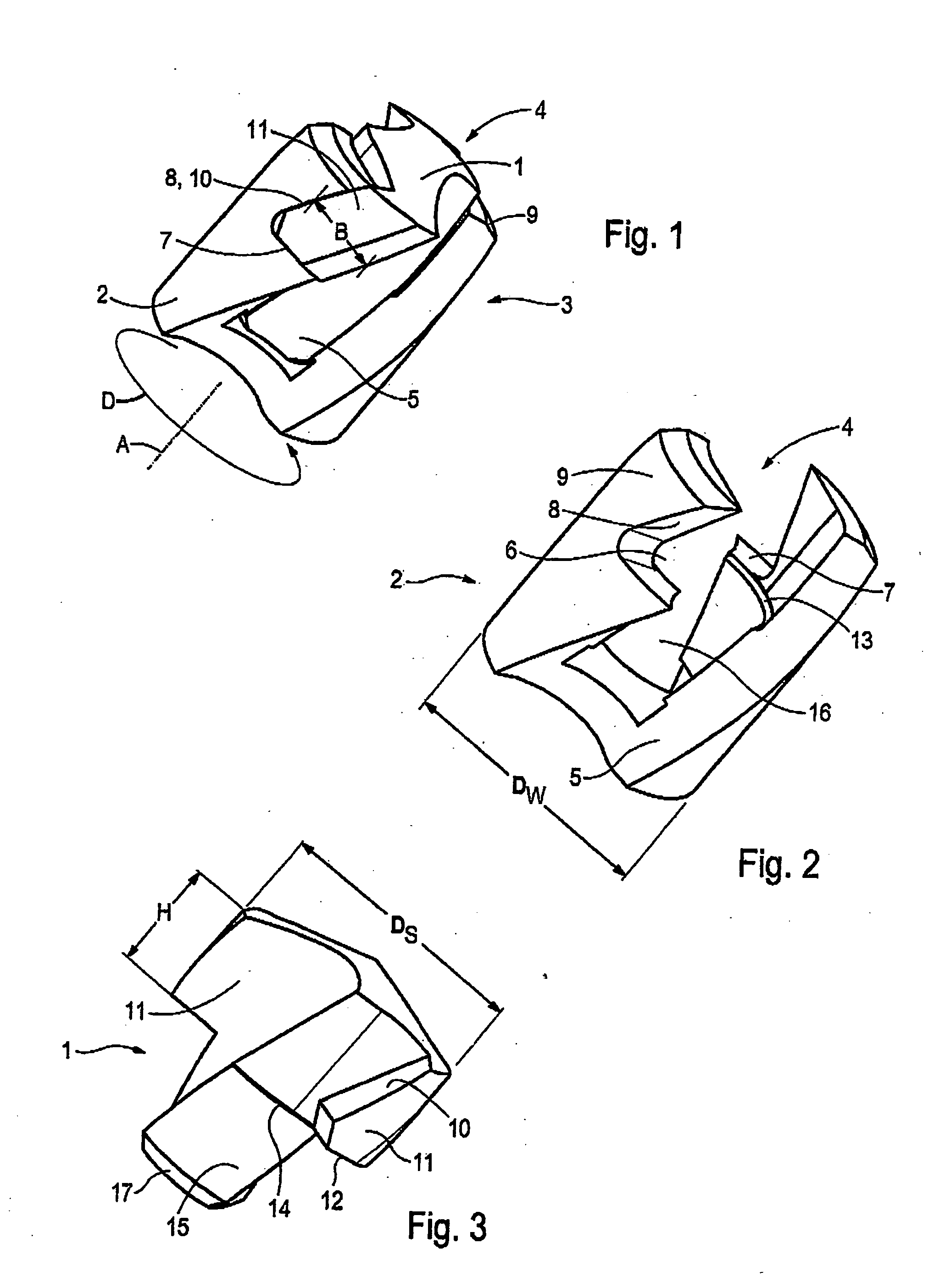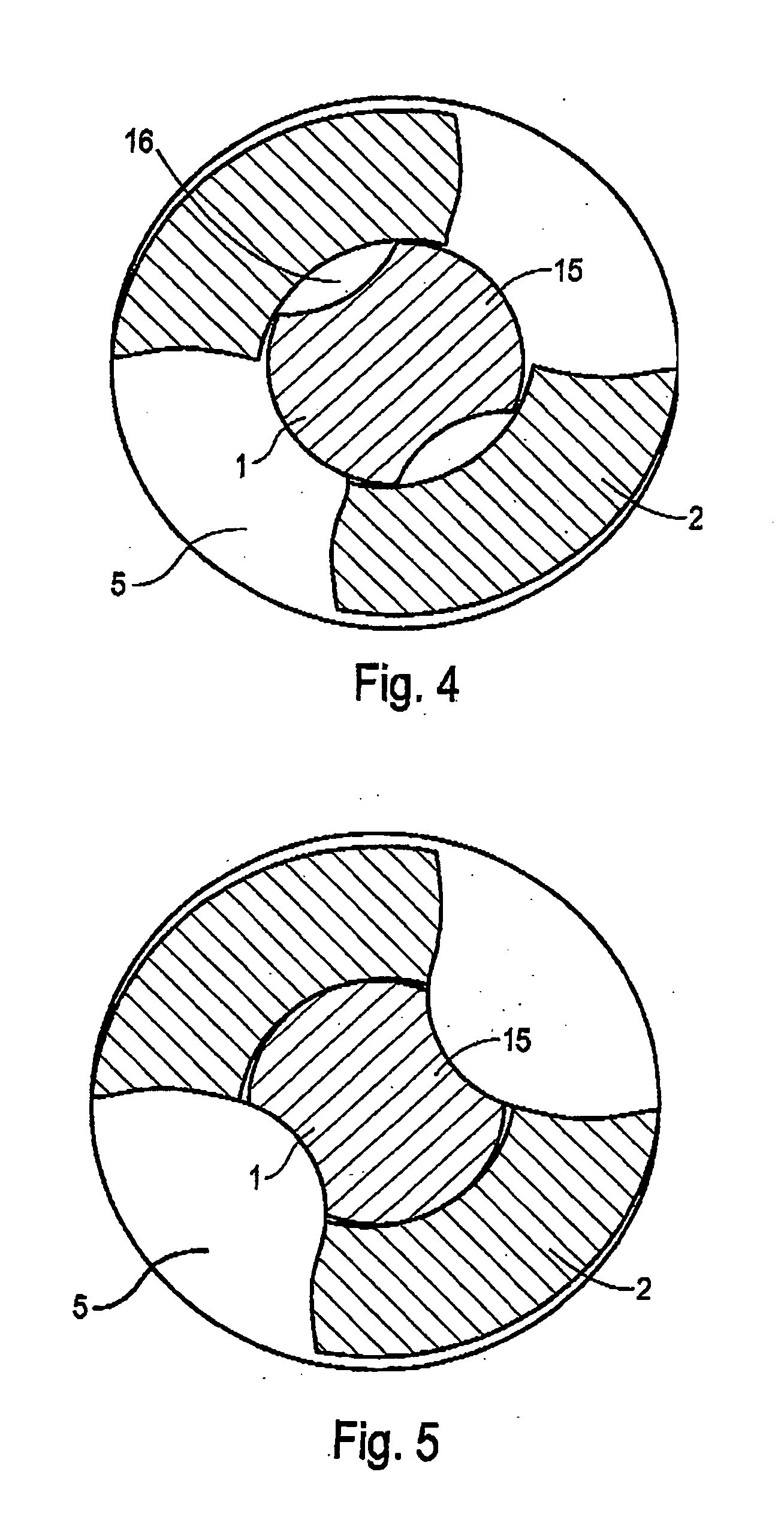Rotary cutting tool, such as a drill, comprising an exchangeable cutting insert, and an exchangeable cutting insert
- Summary
- Abstract
- Description
- Claims
- Application Information
AI Technical Summary
Benefits of technology
Problems solved by technology
Method used
Image
Examples
Embodiment Construction
[0032] Identical parts are provided with the same reference number in all drawings.
[0033] FIGS. 1 to 3 show a perspective view of a cutting element or cutting insert 1 and a drill shank or tool shank 2 of a rotary cutting tool 3 in the form of a drilling tool. A recessing, milling or reaming tool, for example, may be similarly configured. Especially hard metal, cermet, ceramic and HSS, either coated or uncoated, are the materials used for the cutting insert 1. It is possible to provide a cutting insert 1 with PCD or CBN. The cutting insert 1 is finished either conventionally by polishing, for example, or by means of the so-called “metal injecting molding” (MIM) method. The cutting insert 1 is inserted into the tool shank 3 at the tip 4 of the shank. Both for inserting and releasing the cutting insert 1 from the tool shank 2 a key (not shown) is used. The direction of rotation of the tool is identified by D, the tool or drill axis is identified by A. The tool shank 2, advantageously...
PUM
| Property | Measurement | Unit |
|---|---|---|
| Angle | aaaaa | aaaaa |
| Angle | aaaaa | aaaaa |
| Angle | aaaaa | aaaaa |
Abstract
Description
Claims
Application Information
 Login to View More
Login to View More - R&D
- Intellectual Property
- Life Sciences
- Materials
- Tech Scout
- Unparalleled Data Quality
- Higher Quality Content
- 60% Fewer Hallucinations
Browse by: Latest US Patents, China's latest patents, Technical Efficacy Thesaurus, Application Domain, Technology Topic, Popular Technical Reports.
© 2025 PatSnap. All rights reserved.Legal|Privacy policy|Modern Slavery Act Transparency Statement|Sitemap|About US| Contact US: help@patsnap.com



